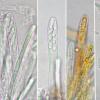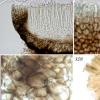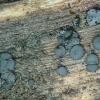
06-09-2023 21:45
 Michel Hairaud
Michel Hairaud
Bonsoir, Je ne trouve pas d'identité pour ce Mol

08-09-2023 17:56
 Bernard CLESSE
Bernard CLESSE
Un petit asco blanc sur capitule pourri et imbib�

08-09-2023 18:32
 Bernard CLESSE
Bernard CLESSE
Quelqu'un connaîtrait-il le nom de cet anamorphe

09-09-2023 11:31
 Zuzana Sochorová (Egertová)
Zuzana Sochorová (Egertová)
Hello, for the purposes of my thesis, I try to ge

08-09-2023 16:31
 Lothar Krieglsteiner
Lothar Krieglsteiner
.. Schwäbische Alb, 31.8.2023, on thin twig of Fa

08-09-2023 10:01
 Bernard CLESSE
Bernard CLESSE
Bonjour à toutes et tous,Pourriez-vous m'aider po

08-09-2023 10:15
 Bernard CLESSE
Bernard CLESSE
Bonjour à toutes et tous, Pourriez-vous m'aider

06-09-2023 12:23
Sylvie Le GoffBonjourSerait il possible d'avoir de l'aide concer
 Bonsoir,
Bonsoir, Je ne trouve pas d'identité pour ce Mollisia récolté sur branche de Salix au sol et ayant un aspect de Patellaria atrata: Apothécies 0,5-1,5 mm, noirâtres, sans marge relevée, à surface externe sublisse.
Asques 60-65 x 5 , PS 22 µm, spores 6-8 x 2-2,2 µm, OCI 0,5 (1)
Paraphyses x 4-5 µm
Cellules de l'ectal à parois brun rouge foncé , de diamètre jusqu'à 18 µm
Cellules marginales courtes, la dernière : 15-17 x 5-8 µm
KOH négatif
Merci pour tout indice.
Amitiés
Michel


M. cinerea is among the closest species which can be compared , indeed.
at least for spore shape and OCI,
Moreover it appears that even the smallest or new developped specimens are that black . Another feature seems distinctive: there is no white rim on the margin
But there are collections in your cinerea folder which look very similar
Amitiés
Michel


Normally the spores of your find are too short and narrow for M. cinerea.
Mollisia cinerea is in my opinion a species of the half-year approximately from november-april.
Take a look here at Zotto's IVV to this relatively recently described species:
https://drive.google.com/drive/u/0/folders/1bxySecfsFmqs9gYxo5tRg7JHileyLd_7?tid=0B5SeyOEkxxZhYVZub0N1aGY5YTg
Shape and color of apos could be a problem though.
Or it's just a new, undescribed one.
There are really quite a few of them.
Greetings
Ingo



